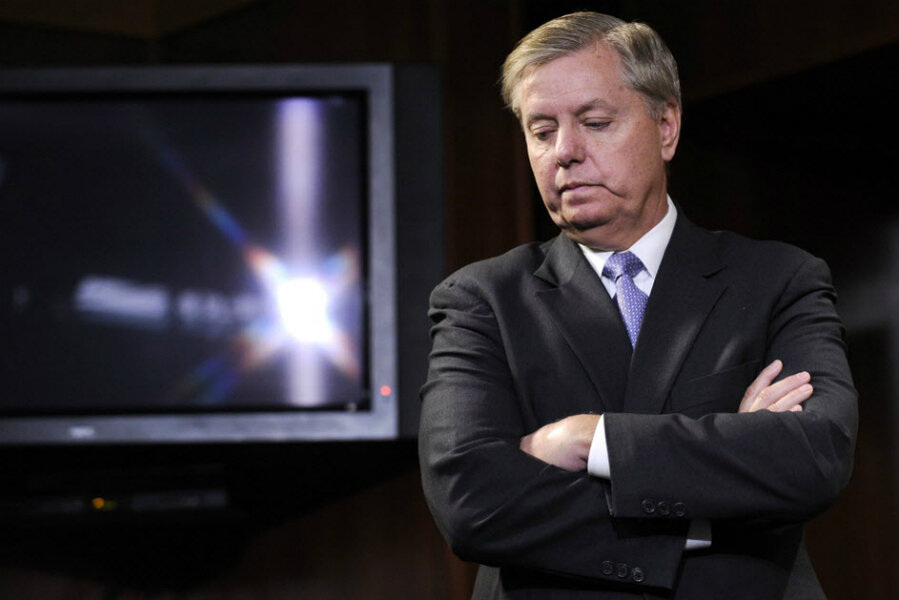What exactly is the US mission in Iraq? Is it simply to defeat Islamic State, is it to bring about lasting stability, or – more ambitious still – to do something that still holds out hope for former President Bush's original goal of democracy in Iraq? Is there a solid goal that US trainers can accomplish and, having done so, pack up and leave? Is America willing to give this mission a year, a decade, a generation? And how many trillions of dollars?
“After the past 12 years in the Middle East, there is a real focus by senior military leaders on understanding what the endgame is,” a senior military official told the Washington Post, “and asking the question, ‘To what end are we doing this?’ ”
Senator Graham did not appear to be impressed with this sort of introspection when he was asked about it on June 14, telling CBS’s "Face the Nation" that military leadership should be focusing on how to destroy the Islamic State.
“If our military leadership thinks we’re on the path to degrade and destroy ISIL,” he said, “they need to be fired.”
But others who have fought in the war believe that the call to simply send in more troops has become a bit too facile.
“If nine years of occupation with over 160,000 troops at its peak didn’t bring about lasting stability, it’s hard to see what a few thousand troops might do,” argues Paul Scharre, a former Army Ranger who is now a senior fellow at the Center for a New American Security in Washington.
“People on the right are starting with this knee-jerk thing – that we should get back in there with more troops,” he says.
Graham argues that more American troops would not be akin to throwing good resources – and lives – after bad. “The surge did work in 2011,” he said. “It would help the Iraqi Army be tougher.”
President Obama’s big mistake was not leaving 10,000 troops in Iraq after 2011, he said. “He’s wasted all the gains that we’ve fought so hard for,” he told CBS. “Iraq and Al Qaeda had been defeated. They were on their knees.”







